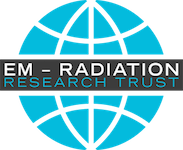Evidence for a connection between coronavirus disease-19 and exposure to radiofrequency radiation from wireless communications including 5G
Beverly Rubik 1 2, Robert R Brown 3
Abstract
Background and aim: Coronavirus disease (COVID-19) public health policy has focused on the severe acute respiratory syndrome coronavirus 2 (SARS-CoV-2) virus and its effects on human health while environmental factors have been largely ignored. In considering the epidemiological triad (agent-host-environment) applicable to all disease, we investigated a possible environmental factor in the COVID-19 pandemic: ambient radiofrequency radiation from wireless communication systems including microwaves and millimeter waves. SARS-CoV-2, the virus that caused the COVID-19 pandemic, surfaced in Wuhan, China shortly after the implementation of city-wide (fifth generation [5G] of wireless communications radiation [WCR]), and rapidly spread globally, initially demonstrating a statistical correlation to international communities with recently established 5G networks. In this study, we examined the peer-reviewed scientific literature on the detrimental bioeffects of WCR and identified several mechanisms by which WCR may have contributed to the COVID-19 pandemic as a toxic environmental cofactor. By crossing boundaries between the disciplines of biophysics and pathophysiology, we present evidence that WCR may: (1) cause morphologic changes in erythrocytes including echinocyte and rouleaux formation that can contribute to hypercoagulation; (2) impair microcirculation and reduce erythrocyte and hemoglobin levels exacerbating hypoxia; (3) amplify immune system dysfunction, including immunosuppression, autoimmunity, and hyperinflammation; (4) increase cellular oxidative stress and the production of free radicals resulting in vascular injury and organ damage; (5) increase intracellular Ca2+ essential for viral entry, replication, and release, in addition to promoting pro-inflammatory pathways; and (6) worsen heart arrhythmias and cardiac disorders.
Relevance for patients: In short, WCR has become a ubiquitous environmental stressor that we propose may have contributed to adverse health outcomes of patients infected with SARS-CoV-2 and increased the severity of the COVID-19 pandemic. Therefore, we recommend that all people, particularly those suffering from SARS-CoV-2 infection, reduce their exposure to WCR as much as reasonably achievable until further research better clarifies the systemic health effects associated with chronic WCR exposure.
Download here: https://pubmed.ncbi.nlm.nih.gov/34778597/

